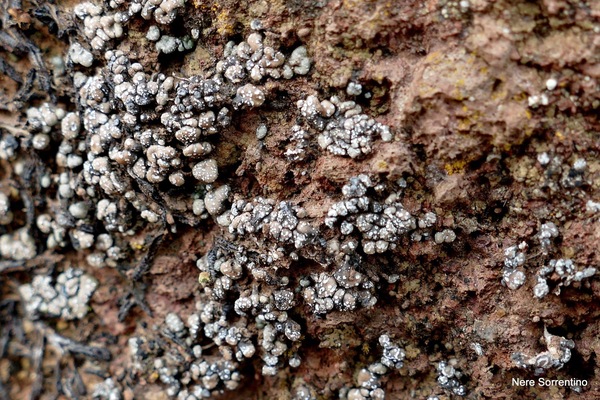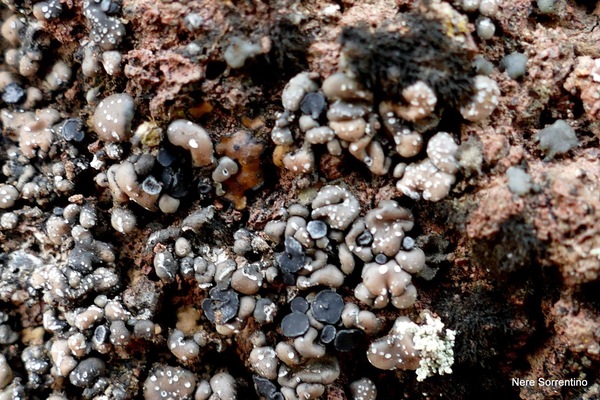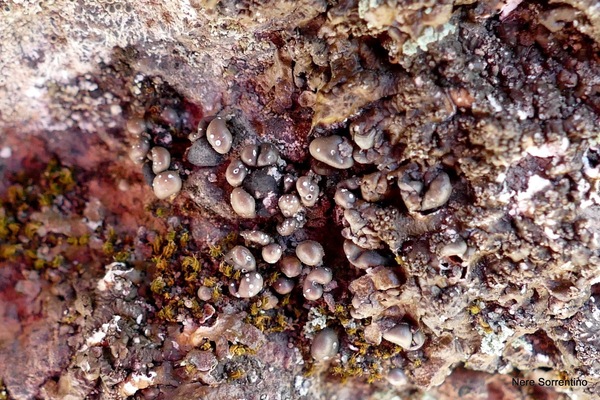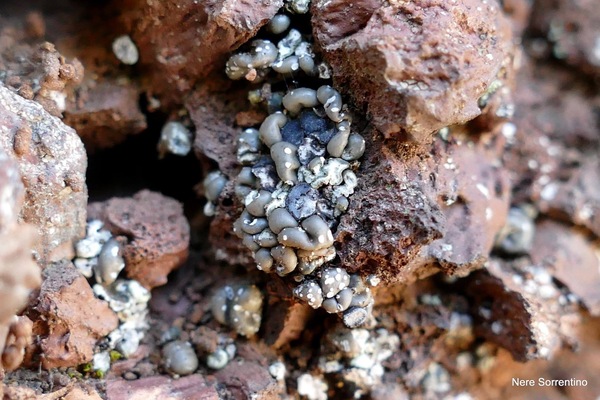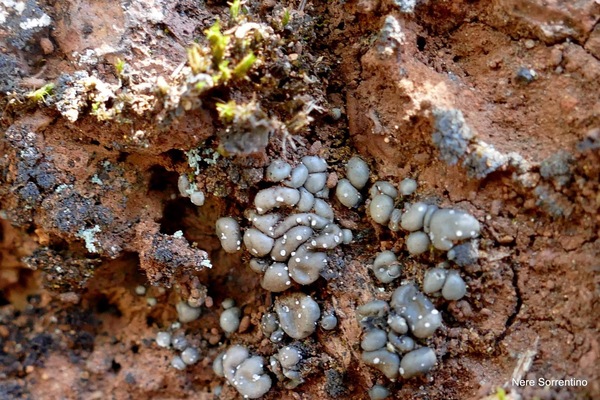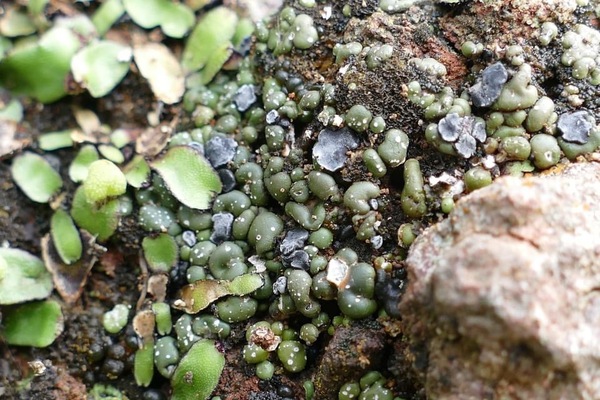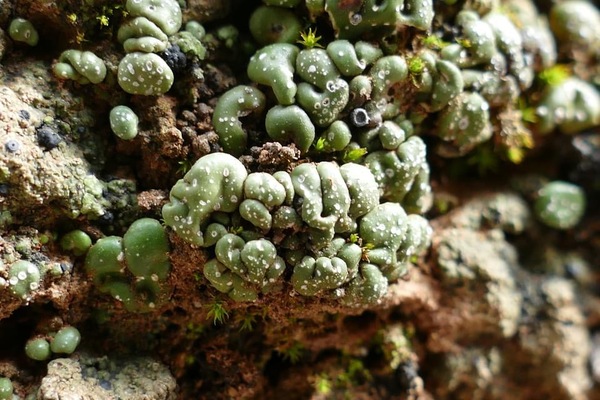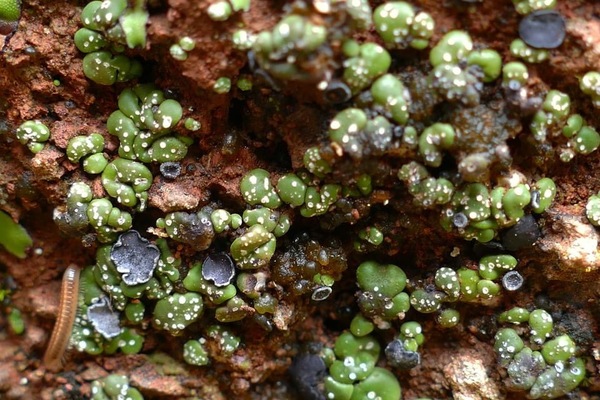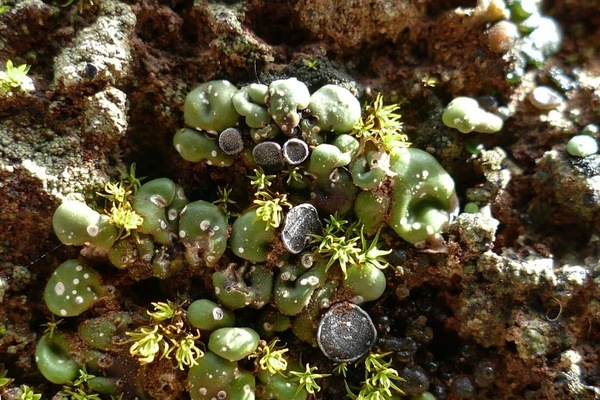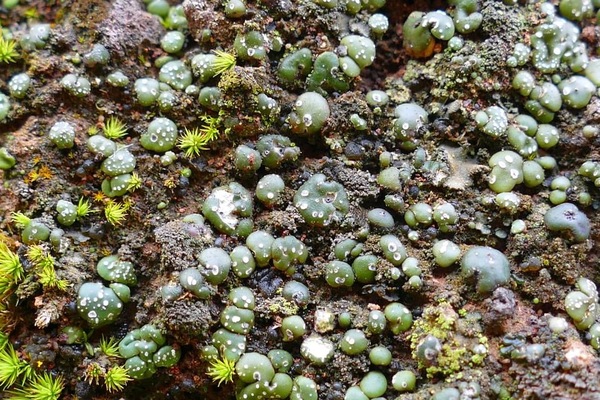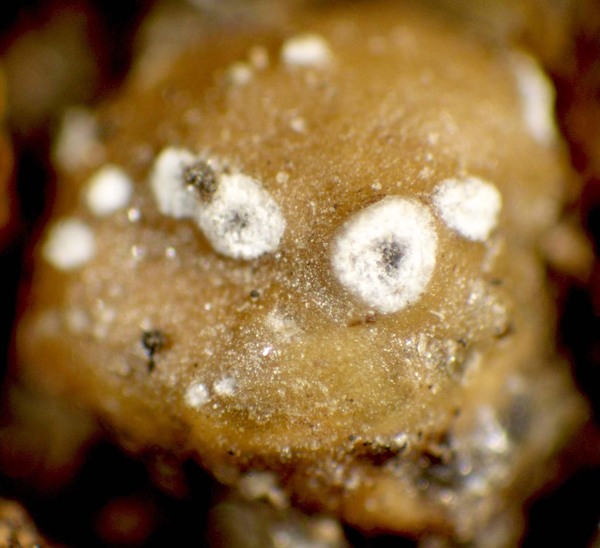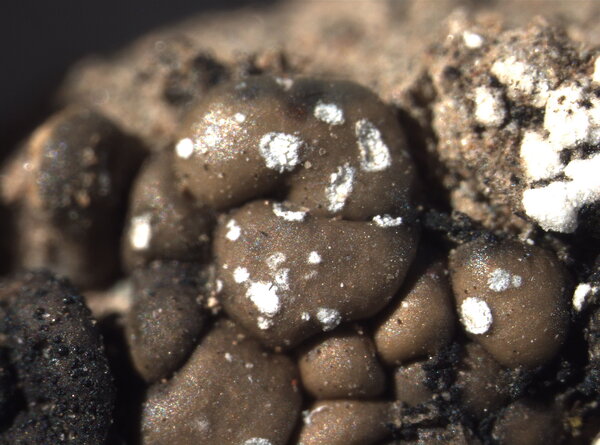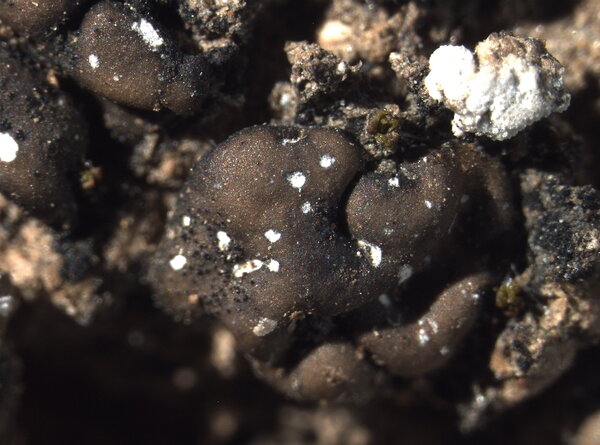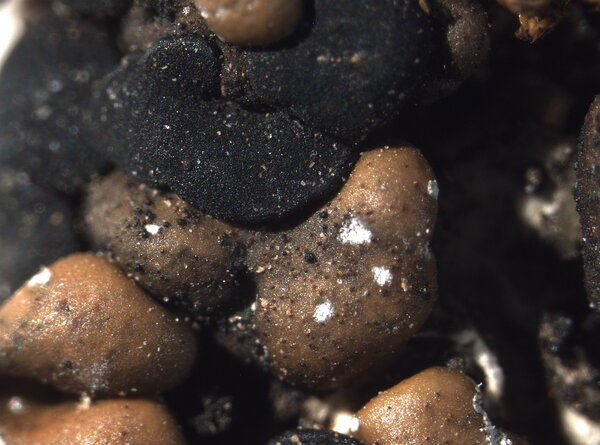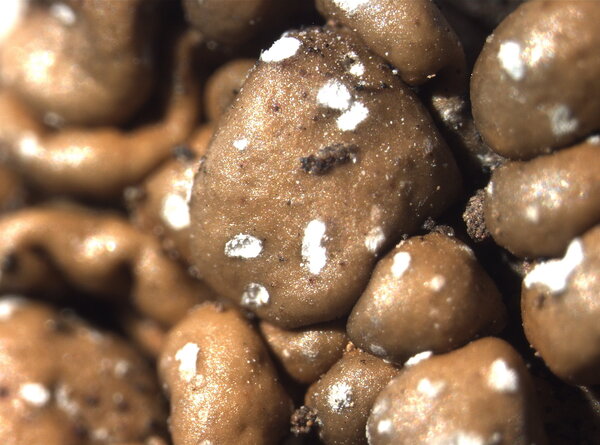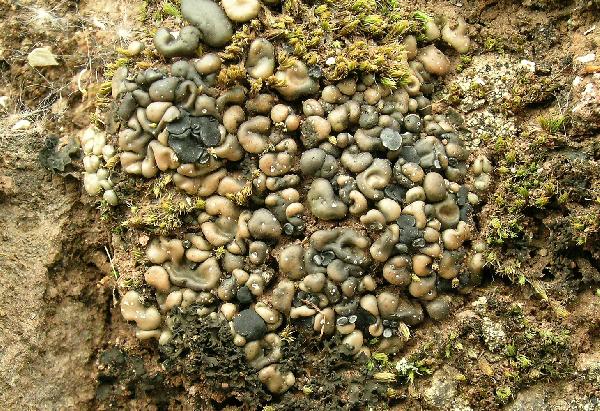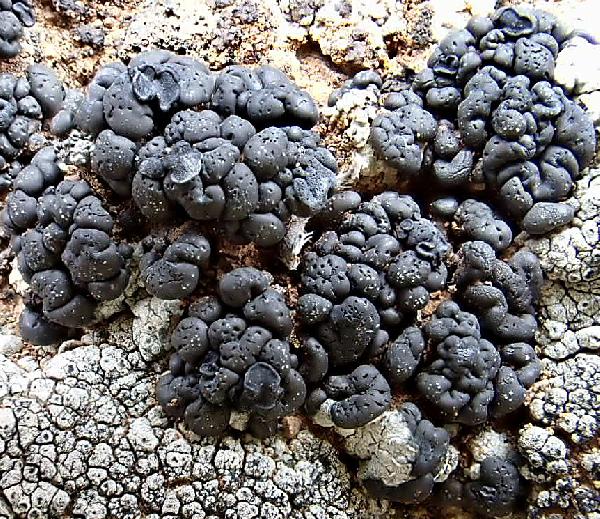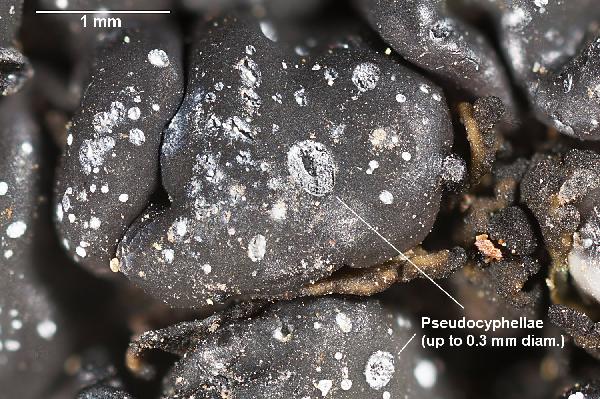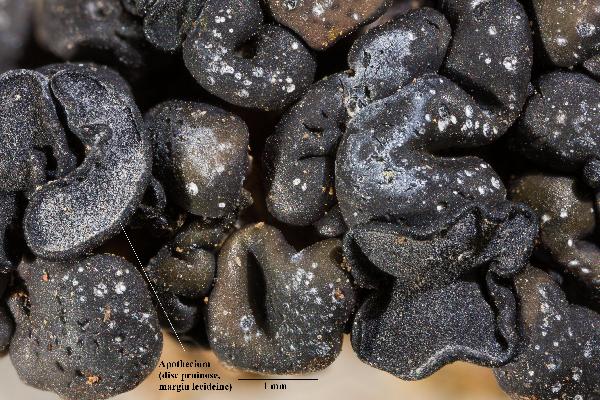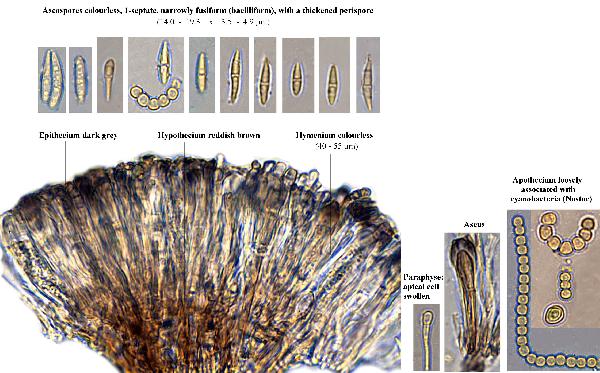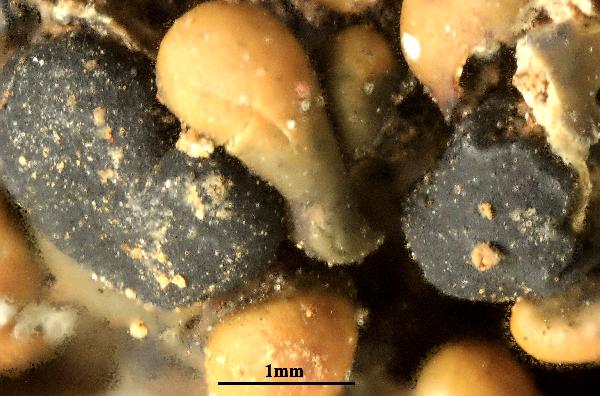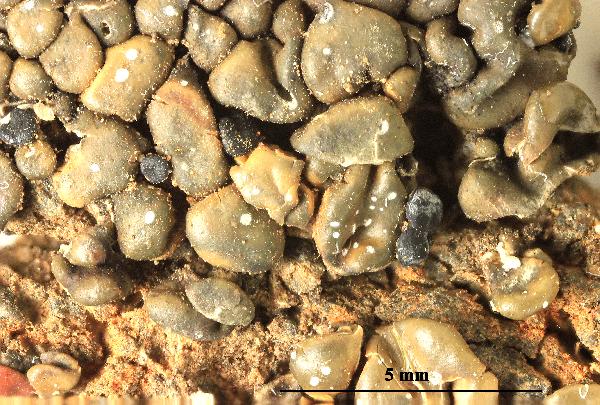Thalloidima toepfferi Stein
Verh. schles. Ges. vaterl. Kultur, 60: 232, 1883.
Synonyms: Toninia toepfferi (Stein) Navás
Distribution: C - Laz, Sar. S - Cal (Puntillo 1996).
Description: Thallus squamulose, olivaceous brown to reddish brown, almost black in extreme sun-forms, green when wet, epruinose, somehow shiny, the squamules scattered to contiguous, up to 4 mm wide, bullate, mostly simple, never columnar, with conspicuous, white, punctiform pseudocyphellae. Upper cortex 30-70 µm thick, with a poorly developed epinecral layer; medulla white, often with crystals dissolving in K. Apothecia frequent, lecideine, rounded, sessile and strongly constricted at base, up to 4 mm across, with a black, epruinose to moderately pruinose, smooth disc and a distinct, smooth, black proper margin, finally often convex and immarginate. Proper exciple dark grey in outer part, reddish brown within, the grey parts K+ and N+ violet; epithecium grey, K+ and N+ violet, sometimes with crystals of calcium oxalates; hymenium colourless, 60-70 µm high; paraphyses coherent, simple or sparingly branched and anastomosing in upper part, thin-walled, the apical cell distinctly swollen, with a gelatinous pigment cap; hypothecium dark reddish brown in upper part, paler in lower part, without crystals. Asci 8-spored, clavate, surrounded by a gelatinous I+ blue coat, with a well-developed I+ blue tholus with a I+ darker blue tube and a well-developed ocular chamber, Bacidia-type. Ascospores 1-septate, hyaline, narrowly fusiform, 15-23 x 3-3.5 µm. Pycnidia dark, immersed. Conidia thread-like. Photobiont chlorococcoid. Spot tests: thallus K-, C-, KC-, P-, UV-. Chemistry: thallus without lichen substances or with traces of terpenoids; apothecia with the Sedifolia grey-pigment.Note: a Mediterranean-Macaronesian lichen found on soil developing from basic siliceous substrata in dry-warm regions with a mild climate, usually in very open grasslands, sometimes starting the life-cycle on cyanobacterial films or on cyanolichens; it is certainly rare in Italy.
Growth form: Squamulose
Substrata: soil, terricolous mosses, and plant debris
Photobiont: green algae other than Trentepohlia
Reproductive strategy: mainly sexual
Commonnes-rarity: (info)
Alpine belt: absent
Subalpine belt: absent
Oromediterranean belt: absent
Montane belt: absent
Submediterranean belt: absent
Padanian area: absent
Humid submediterranean belt: absent
Humid mediterranean belt: extremely rare
Dry mediterranean belt: extremely rare

Predictive model
Herbarium samples
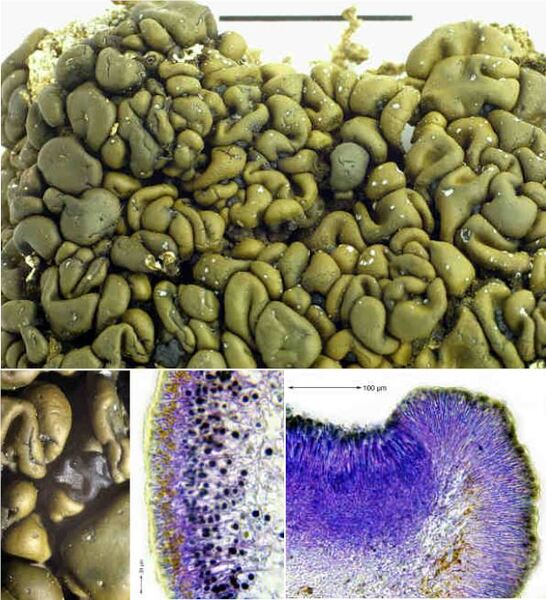

Felix Schumm – CC BY-SA 4.0
Image from: F. Schumm (2008) - Flechten Madeiras, der Kanaren und Azoren. Beck, OHG - ISBN: 978-3-00-023700-3
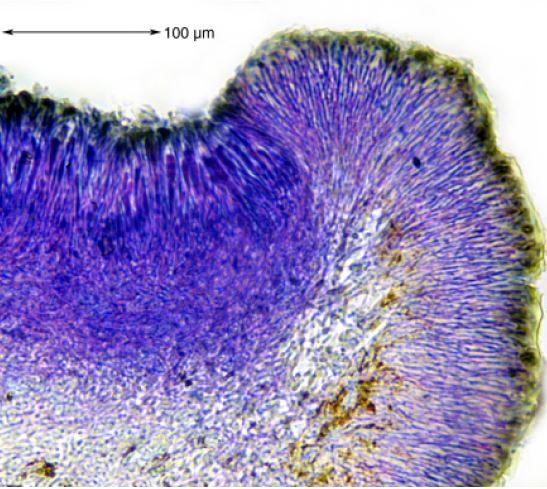

Felix Schumm - CC BY-SA 4.0
Image from: F. Schumm (2008) - Flechten Madeiras, der Kanaren und Azoren. Beck, OHG - ISBN: 978-3-00-023700-3
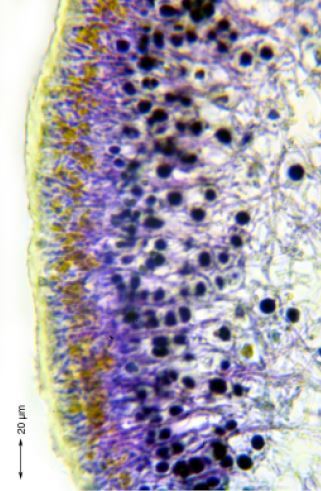

Felix Schumm - CC BY-SA 4.0
Image from: F. Schumm (2008) - Flechten Madeiras, der Kanaren und Azoren. Beck, OHG - ISBN: 978-3-00-023700-3
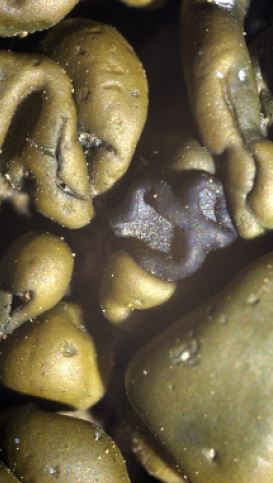

Felix Schumm - CC BY-SA 4.0
Image from: F. Schumm (2008) - Flechten Madeiras, der Kanaren und Azoren. Beck, OHG - ISBN: 978-3-00-023700-3
Growth form: Squamulose
Substrata: soil, terricolous mosses, and plant debris
Photobiont: green algae other than Trentepohlia
Reproductive strategy: mainly sexual
Commonnes-rarity: (info)
Alpine belt: absent
Subalpine belt: absent
Oromediterranean belt: absent
Montane belt: absent
Submediterranean belt: absent
Padanian area: absent
Humid submediterranean belt: absent
Humid mediterranean belt: extremely rare
Dry mediterranean belt: extremely rare

Predictive model
| Herbarium samples |


Felix Schumm – CC BY-SA 4.0
Image from: F. Schumm (2008) - Flechten Madeiras, der Kanaren und Azoren. Beck, OHG - ISBN: 978-3-00-023700-3


Felix Schumm - CC BY-SA 4.0
Image from: F. Schumm (2008) - Flechten Madeiras, der Kanaren und Azoren. Beck, OHG - ISBN: 978-3-00-023700-3


Felix Schumm - CC BY-SA 4.0
Image from: F. Schumm (2008) - Flechten Madeiras, der Kanaren und Azoren. Beck, OHG - ISBN: 978-3-00-023700-3


 INDEX FUNGORUM
INDEX FUNGORUM
 GBIF
GBIF

